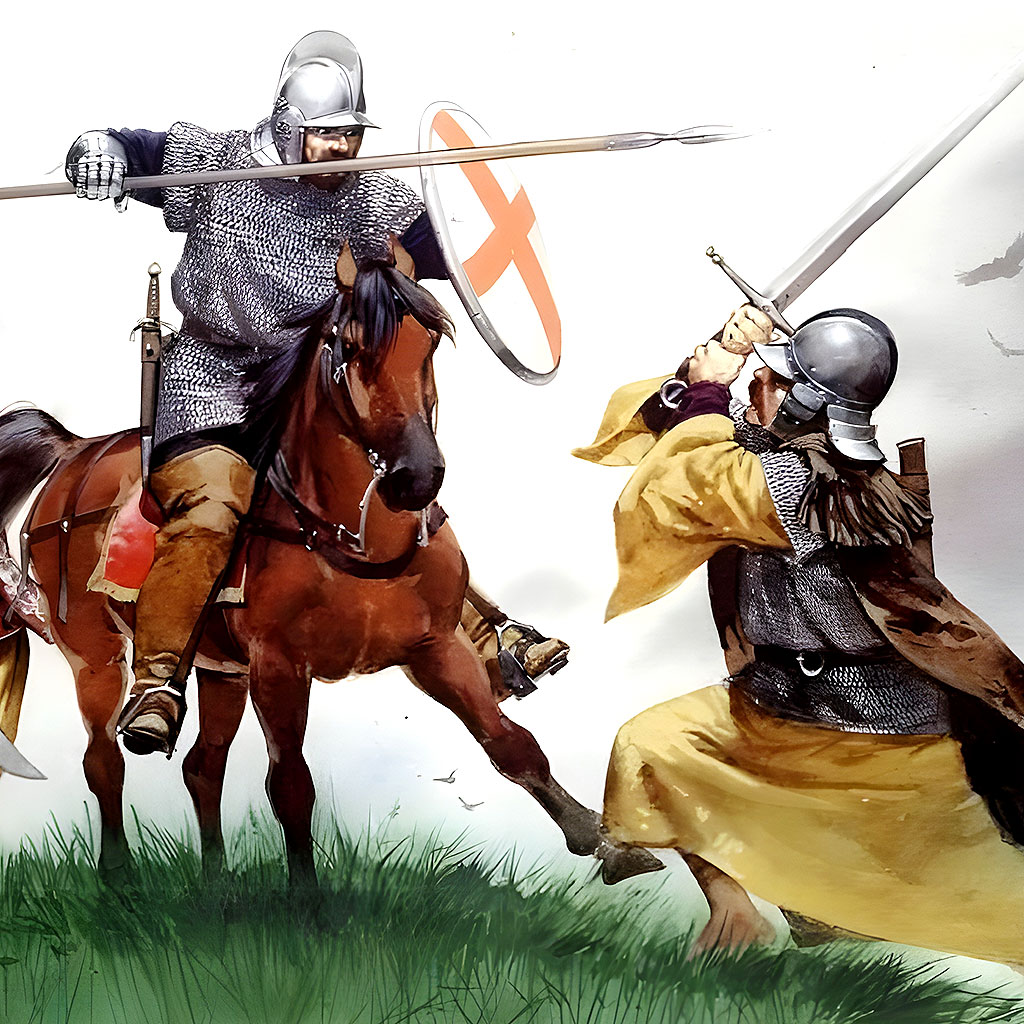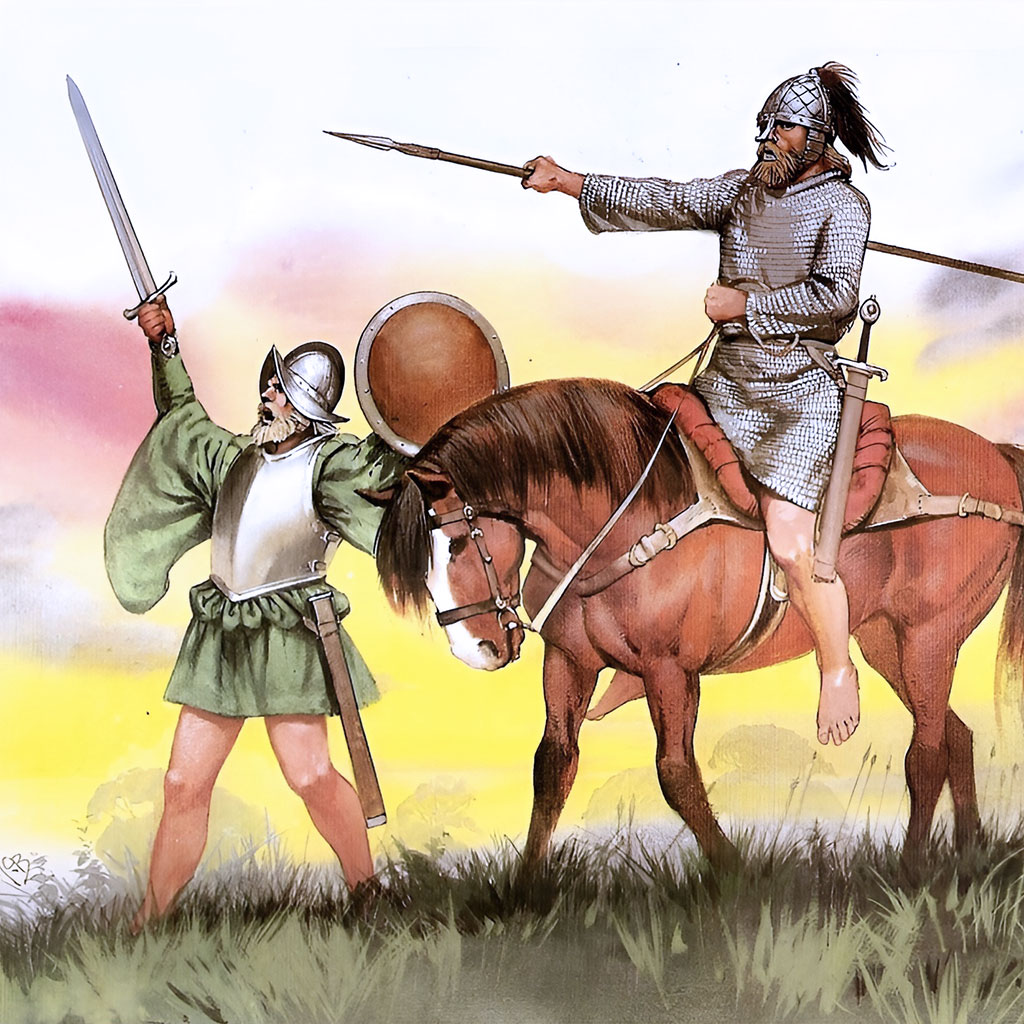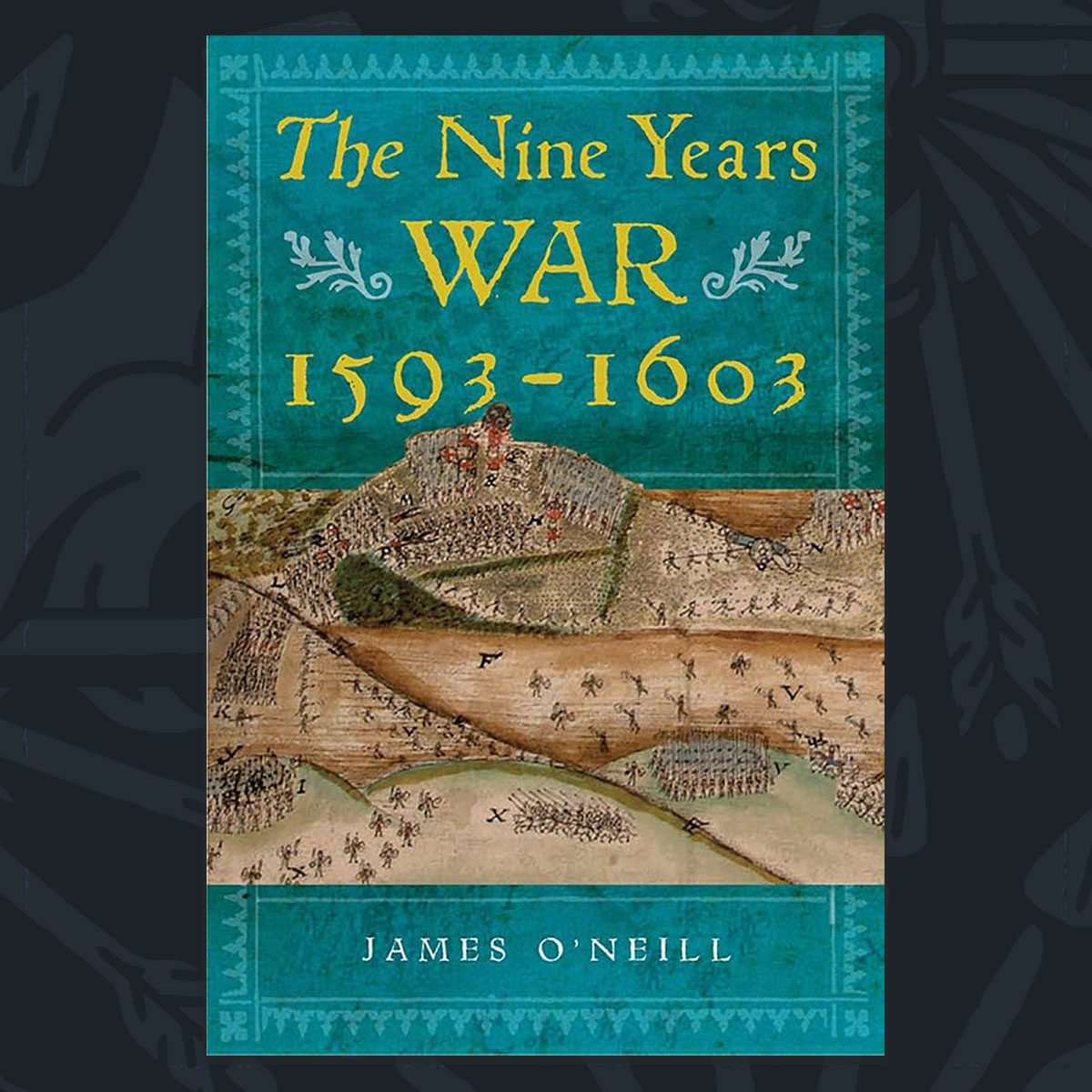
The Yellow Ford: A 1598 Irish Victory Against the Tudors
It was a hot day in August. The English column, a force of nearly 4,000 men on foot and 300 cavalry, was marching along the River Callan in County Armagh, Northern Ireland. They were there to relieve a small English garrison, a fort at the Blackwater River, which had been under siege for months. The fort was a small, isolated outpost deep within the territory of Hugh O’Neill, the powerful Earl of Tyrone, one of the leaders of the great Gaelic resistance. For the men in the column, led by Marshal Sir Henry Bagenal, it was a routine march, though perhaps a dangerous one. They were confident in their numbers and their discipline, the marks of a modern European army. Bagenal, a veteran of Irish warfare, despised O’Neill, and he was eager to crush the upstart chieftain’s rebellion. The stage was set for a decisive confrontation, but the English were about to learn a brutal lesson in the art of asymmetric warfare. Their superior training would be no match for the cunning of the Irish and the unforgiving terrain of Ulster.
The Nine Years’ War (1594-1603) was a bloody and drawn-out conflict fought between a confederacy of Irish Gaelic lords, led by Hugh O’Neill and Hugh Roe O’Donnell, and the English Crown. It was, in many ways, the culmination of a century of slow, brutal conquest by the Tudors. For decades, the English had sought to assert control over the entire island of Ireland, which they saw as a potential launching pad for foreign enemies, particularly Catholic Spain. Their efforts had been met with fierce resistance, and by the 1590s, the Gaelic lords of Ulster were making their stand. What began as a local rebellion quickly escalated into a full-scale national war, with the Irish confederacy receiving promises of support from Spain. The Battle of the Yellow Ford would be a pivotal moment in this war, a stunning Gaelic victory that sent shockwaves through the corridors of power in London.
🗺️ The Tudor Conquest of Ireland
To understand the Nine Years’ War, you first need to understand the Tudor conquest. The English presence in Ireland dated back to the Norman invasion in the 12th century, but by the 1500s, English control was largely confined to a small area around Dublin known as “The Pale.” The rest of the island was ruled by a mix of Gaelic chieftains and Old English noble families, who had, over the centuries, largely assimilated into Gaelic culture. Henry VIII’s declaration of himself as King of Ireland in 1541 was the starting gun for a more aggressive policy of conquest and assimilation. Over the next six decades, English monarchs sought to impose English law, language, and, crucially, Protestantism on the island.
The policy of “surrender and regrant” was a key tool in this process. Gaelic chieftains were encouraged to surrender their traditional titles and lands to the Crown and then have them “regranted” back as feudal estates. This was meant to bring them into the English legal system, but it also stripped them of their power and customary rights. At the same time, the English pursued a policy of plantation, confiscating lands from Irish lords and settling them with loyal English Protestants. This was a direct assault on the traditional Gaelic social and political order and was met with fierce resistance. As English power expanded, so too did Irish resentment. The conquest, with its policies of land confiscation and religious persecution, created a powder keg that was ready to ignite.
The execution of Gaelic chieftains and the appointment of English sheriffs into Irish territories were deeply destabilizing. In Ulster, the last bastion of Gaelic power, Hugh O’Neill, the Earl of Tyrone, found himself at a crossroads. Raised in the English court, he was initially seen as a reliable instrument of English policy, but he eventually grew disillusioned with the Crown’s aggressive expansionism. Allied with Hugh Roe O’Donnell, another powerful Ulster chieftain, O’Neill began to secretly build a formidable army. Their uprising marked the beginning of the Nine Years’ War, a final, desperate struggle to preserve the Gaelic way of life. The war was not just a military conflict; it was a cultural, political, and religious struggle for the soul of Ireland.
The key takeaway: The Tudor conquest was a century-long effort to assert English authority over Ireland, using a mix of legal maneuvering and military force. This process, which included the policies of “surrender and regrant” and “plantation,” systematically dismantled the traditional Gaelic social structure and created the conditions for a major rebellion.
⚔️ The Nine Years’ War
The Nine Years’ War began in earnest in 1594. O’Neill and O’Donnell’s forces successfully used guerrilla tactics, ambushing English troops and harassing their garrisons. Their campaign was remarkably effective, and they were soon joined by other discontented Irish lords across the country. The English, under a succession of Lord Deputies, struggled to contain the rebellion, which was spreading like wildfire. O’Neill, a brilliant strategist, modernized his army, training his men in the use of muskets and pikes, and he built a network of support that extended even to Spain. His forces were not just a collection of clansmen; they were a well-drilled and motivated fighting force.
By 1598, the war had reached a fever pitch. The English had managed to establish a fort on the Blackwater River, a strategic point that threatened O’Neill’s home territory of Dungannon. The fort was a thorn in O’Neill’s side, and he had laid siege to it. With the garrison running low on supplies, the English government in Dublin debated whether to abandon the fort entirely. Ultimately, they decided to send a large relief column from the Pale. Sir Henry Bagenal, an old rival of O’Neill’s, was given command. Bagenal, who was furious at O’Neill for eloping with his sister years before, was determined to not only relieve the fort but also to crush the Irish rebellion in a single stroke. He gathered his army, one of the largest English forces ever assembled in Ireland, and marched north.
The Irish, however, were waiting. O’Neill, a master of the terrain, had meticulously planned his ambush. He knew Bagenal’s route and had spent weeks preparing the battlefield. His men had dug trenches, erected earthworks, and constructed hidden traps in the thick scrubland. The English would have to march through a narrow, boggy corridor, a killing field of O’Neill’s own design. As Bagenal’s column neared the Yellow Ford, a boggy area of raised ground on the River Callan, they were confident in their numbers and their weaponry. They had no idea they were walking into a trap from which few would escape.
Why it matters: The Nine Years’ War was a national struggle for independence. The Irish were not just fighting for their land; they were fighting for their political and religious autonomy against a relentless English expansionism that threatened to erase their culture entirely.
💥 The Battle of the Yellow Ford

The Battle of the Yellow Ford took place on August 14, 1598. As the English column began its march from Armagh, it was immediately subjected to harassing fire from Irish snipers hidden on both flanks. The difficult terrain, with its bogs and thickets, began to break up the English formations. The English regiments, marching with heavy supplies and artillery, became separated. Bagenal’s command structure, which relied on maintaining tight formations, began to unravel. As the lead regiment crossed a boggy ford, the “Yellow Ford,” it became dangerously isolated from the rest of the column. This was exactly what O’Neill had planned.
The Irish, under the command of O’Neill, sprang their trap. They attacked the fragmented English column from all sides, using their knowledge of the landscape to their advantage. The English, bogged down and disoriented, were unable to effectively respond. To make matters worse, Marshal Bagenal was killed by a musket ball to the head. His death threw the English command into chaos. The situation went from bad to worse when an English gunpowder wagon, possibly ignited by an accident, exploded in the center of the column. The blast killed and wounded hundreds of men, and the thick cloud of smoke and fire only added to the panic and disarray.
With their commander dead and their ranks in utter confusion, the English army began to retreat. O’Neill’s forces, sensing victory, pressed their attack with renewed vigor, slaughtering the retreating English. The English cavalry broke and fled south, but the infantry was left to its own devices. Over the next few hours, the English were systematically routed. Estimates vary, but it is believed that over 1,500 English soldiers were killed, and many more were wounded or deserted. The Irish suffered relatively light casualties. The remnants of the English force retreated to Armagh, where they were besieged. After three days of negotiations, they were allowed to leave, but only after surrendering their arms and ammunition. The fort at Blackwater, the original objective of the campaign, was also forced to surrender.
The key takeaway: The Battle of the Yellow Ford was a devastating English defeat due to a combination of Irish tactical superiority, careful preparation of the battlefield, and a series of calamitous events that threw the English army into chaos.
🕊️ The Flight of the Earls
The stunning victory at the Yellow Ford cemented O’Neill’s reputation as a military leader and a national hero. The defeat was a massive setback for the English and a major turning point in the Nine Years’ War. The Irish rebellion, which had been confined to the north, now spread throughout the island. Many who had previously been loyal to the Crown now flocked to O’Neill’s banner, seeing his victory as a sign that the English could be defeated. The English response was to send an even larger army, under the command of the Earl of Essex, but he too was unable to achieve a decisive victory. The war dragged on for several more years, culminating in the decisive English victory at the Battle of Kinsale in 1601.
Despite the English victory at Kinsale and the subsequent Treaty of Mellifont, O’Neill and O’Donnell were pardoned and their lands were nominally restored. However, they soon found their power and influence being systematically eroded by the new English government under King James I. The English were determined to complete the conquest of Ireland, and they would not tolerate the continued existence of powerful Gaelic lords. Facing constant threats, legal challenges, and the prospect of arrest, O’Neill and Rory O’Donnell, the new Earl of Tyrconnell, made a fateful decision. On September 4, 1607, they, along with nearly 100 of their family and followers, set sail from Lough Swilly in County Donegal for the continent.
This event, known as the “Flight of the Earls,” marked the end of the Gaelic order in Ireland. It was a poignant and dramatic moment in Irish history, and it paved the way for the full-scale Plantation of Ulster, where the lands of the exiled earls were confiscated and settled with thousands of Protestant English and Scottish settlers. For the English, the flight was a gift, a perfect justification to seize control of the north of Ireland once and for all. For the Irish, it was a tragedy, the final act of a long struggle for independence that had begun with such hope just a decade earlier at the Yellow Ford. It was the end of an era, and the beginning of a new, and often more bitter, chapter in Irish history.
The Battle of the Yellow Ford stands as a powerful testament to the resilience and strategic genius of the Gaelic Irish leaders who fought to preserve their culture and autonomy. It was a rare and glorious moment of triumph against a relentless, modernizing imperial power. But as the story of the Flight of the Earls makes clear, one battle, no matter how decisive, is not enough to win a war against a determined foe. The Irish victory at the Yellow Ford was a brilliant flame of resistance, but it was not enough to stop the tide of conquest that would eventually wash over the entire island. It is a moment of both triumph and tragedy, a flash of glory in a long and ultimately losing battle. What do you think about the lasting legacy of the battle? Was it a momentary victory that was ultimately insignificant, or a symbolic act of resistance that inspired future generations? I’d love to hear your thoughts in the comments.

For a deeper understanding of this pivotal period, I recommend the book The Nine Years War 1593-1603: O’Neill, Mountjoy and the Military Revolution by James O’Neill, published by Four Courts Press in 2018. This book provides a detailed and scholarly look at the conflict, placing the Battle of the Yellow Ford within its proper historical context.
(The illustrations in this article are by Angus McBride.)
